Also see Marian’s blog posts on the Huffington Post and Forbes.com.

“What to Expect in Connecticut in 2015,”
Stamford Advocate, Dec. 31, 2014
Marian turns her trendspotting eye on her home state to forecast a few trends for the coming year. Connecticut will become part of the national trend toward foods and teas that contain marijuana, she says. Two other trends deal with the family unit—and how healing, forgiveness, healthcare reform, minimum wage and immigrants will all change how Connecticut sees families. Marian adds that the state will also continue to top the economic-discrepancy charts and its residents will personally see the effects of climate change

“Stamford PR Executive Predicts ’10 Trends for 2015′,”
Westfair Online, Dec. 22, 2014
“For nearly two decades,” says this brief about trends forecast for Connecticut in the next year, “Stamford resident Marian Salzman, CEO of New York City–based Havas PR North America, has released an annual report with predictions for the coming year. Her report covers ‘the next big things on a wide range of topics’ and this year finds marijuana, family, income inequality and climate change ripe for emerging trends” in the state.

“Havas Unveils 10 Trends for 2015 Including Bugs, Food Regulation, Portability, Self-everything + More,”
Campaign Brief, Dec. 11, 2014
In Havas’ new “10 Trends for 2015” report, the agency is forecasting “self-” as the overriding idea for the new year. Says Marian, CEO of Havas PR North America and an award-winning trendspotter, who authors the report: “We can’t take much more turbulence, and maybe that’s why despite craving the co-, we’re all trying to save our individual selves. In a world of massive everything moving at warp speed, where individuals can easily feel overwhelmed and lost, focusing on what’s small and local is a great strategy for finding a sense of self.”
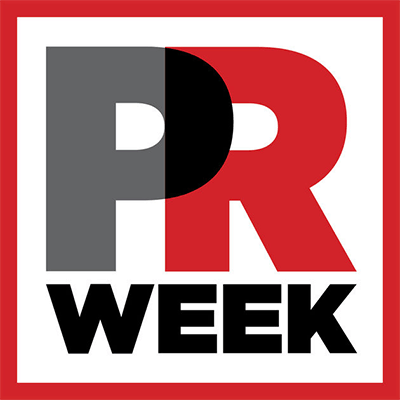
“Now and Next: Trending Topics for Today and 2015,”
PRWeek, Dec. 8, 2014
What words and ideas dominated the year, and what will infiltrate our conversations in the coming months? As part of Havas Worldwide’s annual trends report, “10 Trends for 2015,” the agency generated two word clouds that highlight topics everyone was talking about in 2014 and what will be trending next year. Marian, a world-renowned trendspotter, and CEO of Havas PR North America, shares the thoughts behind some of the words—for instance, “seat-squeeze rage” was popular last year because of airline passengers taking out their frustrations on one another because of the smaller distance between seatbacks, and in 2015, not coincidentally, we’ll be hearing about (more) affordable private jets. Subjects for the 75 or so other words in each cloud range from feminism, food and fashion to consumption and commerce.

“A Soothing Tonic for the Gluttony of the Season,”
LinkedIn, Dec. 1, 2014
#GivingTuesday was started three years ago as “both an antidote to the conspicuous consumption of the holiday weekend before it, and the unofficial kickoff to the giving season,” says Marian in this bylined piece. “The beauty of #GivingTuesday is its power to refocus people’s energy on generosity—which countless academic researchers have shown makes us far happier than just getting yet still more stuff—and its ability to channel that energy toward smarter giving,” she continues. “GivingTuesday.org is a clearinghouse for good causes, but the movement’s grassroots supporters just as easily spread the word with its catchy, memorable hashtag.… Yes, I’m a marketer, and when I do my job well, that means people buy things. I have no problem with consumption, but we need some balance. #GivingTuesday is it.”
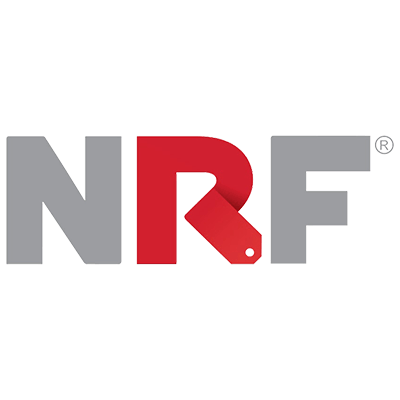
“Retail in 2015: The Paradox of ‘Self-’,”
National Retail Federation, Nov. 13, 2014
“Selfie” was the word of the year for 2013. What will the next word of the year—and possibly word of the age—be? In this opinion column for the National Retail Federation, Marian, a world-renowned trendspotter, chooses “self-.” As in self-confidence, self-portrait, self-referential and much more. Says Marian: “Fashioning a positive self-image is now recognized as a vital task for everyone, boosted by good measures of selfconfidence, self-esteem, self-discipline, self-respect and self-regard. In other words, self-promotion is becoming an important tool for self-preservation.” She notes, though, that selflessness is also an increasing trend. What does that mean for the retail industry next year? Among other conclusions, Marian says that “[t]he biggest driver in the consumer marketplace will be the yin and yang around the dueling emotions of self indulgence and unselfishness.”

“#GivingTuesday: A Dedicated Day of Giving,”
The Holmes Report, Nov. 9 2014
In this piece about #GivingTuesday, the global day of giving, Marian gives a few reasons for its massive success. “#GivingTuesday is even more relevant with today’s sharing economy and collective mindset,” she says. “[And] we have become a more generous society, in part because recent financial events spurred us to act together and in part because generosity just feels good.” #GivingTuesday, which this year will be on Dec. 2, is a client of Havas PR, as is the United Nations Foundation, co-founder of the movement along with 92Y. The agency is also working with many of its other clients—from the Bob Woodruff Foundation and Cabot Creamery to Fox Restaurant Concepts, Ruby Rocket’s, Samahope, Tucson Values Teachers, and the University of Arizona’s Huerta Scholars Program—to support their initiatives for the big day.

“Made Marian,”
Quirk’s Marketing Research Review, November 2014
“I found myself one day not knowing what the Internet was and the next day being in the Internet business,” says Marian in a profile of her groundbreaking work launching online qualitative research. In a quick span of time, AOL invested money for Marian and her colleagues to design a private chat room for running the online focus groups they had pioneered; Ad Age announced that Chiat/Day was hiring her to run its new Emerging Media unit, which launched CyberDialogue; and she and her staff were running 15 to 20 focus groups a week, including for agencies competing on the same pitch. In 1994, she helped conduct the first benchmark study (private and proprietary) of Internet users. All the work she was doing helped put her on the forefront of social media, too. How does Marian compare her experience with those AOL communities and what’s happening in the digital and social world today? ““On AOL, people felt anonymous. Today everyone is online. Facebook is your offline life brought online.”

“Conscientous Consumerism on the Rise,”
The Holmes Report, Oct. 5, 2014
Conscientious consumption is increasing worldwide, according to a study from Havas PR. One conclusion from the related report, says this article: “Consumers like the idea of being conscientious but are most likely to engage in conscientious behavior that requires little or no additional cost or effort from them.” Marian says, “In part, this phenomenon is about people everywhere questioning the assumptions of the financial crisis that started in 2007.… Plus, the transparency trend and so many others are converging to bring us to where we are now: more mindful in both consumption habits and our social and environmental impact.”

“Council of PR Firms Names Christopher Graves as Chair,”
The Holmes Report, Oct. 19, 2014
In addition to the announcement of new executive officers and board members of the Council of Public Relations Firms, this news item notes that continuing directors include Marian.

“McDonald’s to Customers: Ask About Food Quality,”
USA Today, Oct. 13, 2014
In a move to target millennials, McDonald’s started a campaign asking people to submit questions by social media about how the chain’s food is made. Answers will come in the form of webisodes and/or other social content. Marian gives her take on the campaign in this article: “They clearly understand that young people want healthful, fun foods and that they [McDonald’s] are perceived as less healthy and less credible. But this feels a bit like food washing, too, because there is no conversation about salt, sugar and preservatives.”

“Are Conscientious Consumers Catered To or Created?“
Words. Concepts. Strategies., Oct. 10, 2014
Havas PR’s report on conscientious consumerism, “BeCause It Matters,” forms the backbone of this piece on the conscientious consumerism trend. Becker points out that the term “ethical consumerism” was first popularized in the U.K. in 1989 and that the concept has gone by a few other names since then. What Havas PR’s study says is happening right now is this, as this post reports: “Globally, 34 percent of consumers say that they always or often purchase one brand over another for reasons of conscience. Sixty-seven percent said they would like to do so in the future.” Marian gives numerous reasons for the current phenomenon, including this: “[T]he transparency trend and many others are converging to bring us to a heightened mindfulness in both consumption habits and social and environmental impact.”
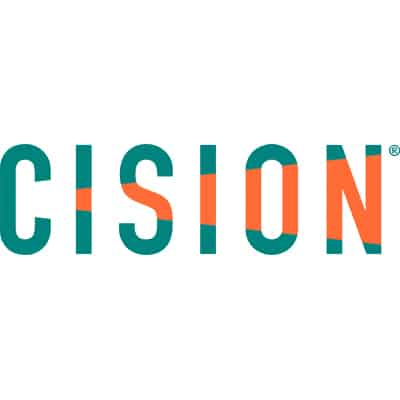
“Havas PR Study Shows Conscientious Consumers Are on the Rise in the United States,”
PRNewswire, Oct. 6, 2014
In the U.S. (and 19 other countries), Havas PR asked consumers to respond to nine statements rating their consumption behavior in the past year, the present and the next 12 months. Among the top U.S. findings: Twenty-one percent of American consumers often or always bought one brand over another in the past year because it’s more responsible; 54 percent agreed that in the coming year they would like to buy brands that let them support well-being and sustainability. (Globally, 34 percent of consumers often or always bought one brand over another for reasons of conscience in the past and 67 percent would like to do so in the future.) In part, says Marian, this is attributable to 21st-century tools that let people “get more information in order to be consumers who are proactive about ethical, responsible, sustainable brands.”

“Esteemed American Association of Advertising Agencies (4A’s) Announces the Partner Awards to Honor Creative Collaboration,”
The Street, Sept. 30, 2014
The 4A’s has announced a new award that will recognize and honor great partnerships that elevate creativity to new levels. The organization said it has replaced the O’Toole Awards with this new program in order to reflect the marketing industry as it looks today, aligning with the 4A’s “We’re your partner for business” positioning. Awards will be given in the categories of brand, creative, media, technology, diversity and cause partnerships. Marian will serve as the only jury member representing the PR industry.

“Connecting with Conscientious Consumers,”
PRWeek.com, Sept. 29, 2014
A global Havas PR study shows that conscientious consumption is rising. What’s driving it? Disruption, especially in economies, but also in expectations and assumptions. “Previously normal patterns of life have been shaken up. This has prompted people to start paying more attention to what’s going on and how it affects them,” says Marian (CEO of Havas PR North America and chair of the Havas PR Global Collective) in this bylined piece about the resulting report, “BeCause It Matters.” Among the implications for what’s next in the United States, Marian adds, is this: “Being a brand with a positive reputation is likely to earn the loyalty of many U.S. consumers. Watch likely loyalty to responsible brands keep growing.”

“Connecticut Women’s Hall of Fame Asks: How Are You Shaping Our World?“
East Haven Patch, Sept. 15, 2014
The Connecticut Women’s Hall of Fame has designed a photo contest to discover what people are doing to shape their world. It’s part of the celebrations around this year’s inductees, which includes Marian, a Connecticut resident. The ceremony takes place in Hartford on Oct. 29, 2014.

“Shape the Future Series: Marian Salzman, Trend Spotter,”
Allan Gray Orbis Foundation, Aug. 18, 2014
Among other things, this profile of Marian says that “[w]hile Salzman might not have an actual fortune-telling crystal ball, she does seem to have an uncanny knack for predictions. How does she do it? She’s an expert trend spotter.… Described as having her finger on the collective pulse, Salzman has been rated as one of the world’s top trend spotters. She has worked for companies the world over, keeping them up to date and even a step ahead of the market. This has made Salzman’s talent highly sought after—and incredibly valuable.”

“The New Power of Millennial Hispanics,”
CNBC.com, Aug. 13, 2014
While Hispanic-Americans are “the swing in more and more swing states,” says Marian in this bylined article, “shaping discussion and policy on everything from immigration reform to gay marriage,” marketers need to pay attention to their spending power, especially Hispanic-American millennials. She cites this statistic: Every month for the next 20 years, about 50,000 Hispanic-Americans will turn 18. For these reasons and others, Havas PR, where Marian in CEO, surveyed 800 young people (Hispanic and non-Hispanic) in the U.S. states bordering Mexico. Among the insights: Young Hispanics are more optimistic, more fashion-conscious and more interested in owning their own business than their non-Hispanic peers.

“How Texas Metro Areas Compare Economically,”
Houston Chronicle, July 19, 2014
In a study comparing the economic performance of the country’s 100 largest metro areas from 2009 to 2012, four Texas cities ranked in the top 10. In the section of this article describing Austin (at No. 6), the authors lead with this: “‘Austin envy,’ as Forbes.com blogger Marian Salzman has called it, is still going strong.” Houston ranked No. 4, Dallas–Fort Worth/Arlington came in at No. 7, and San Antonio/New Braunfels was right behind at No. 8.

“Havas PR Launches Global Climate Change Practice,”
The Holmes Report, July 13, 2014
Havas PR is launching a new global climate change communications group, bringing together experts in important geopolitical centers worldwide. Pete Bowyer, who worked with former UN Secretary-General Kofi Annan on climate justice issues, will lead the group and report to Marian, CEO of Havas PR North America. Says Bowyer: “There is real momentum developing across the world as a new global agreement on climate change approaches at the UN Paris Conference next year.”

“Study: Phoenix Among Cities Attracting Attention from Border-State Millennials,”
Phoenix Business Journal, July 11, 2014
As this article summed up: “The economic and social heft of the nation’s millennials can be felt in cities from coast to coast, and metro areas in states that border Mexico are no exception, according to a new survey commissioned by Havas PR North America.” As part of the survey, 800 millennials were asked which 10 cities in the four states (Arizona, California, New Mexico and Texas) have the most potential for them. Marian is quoted as saying that “[t]he highest-ranked cities have three commonalities: They are ethnic, affordable and youthful, including college towns as one anchor.” Phoenix landed at No. 4.

“Hispanic Millennials Choose San Antonio, Dallas Over Houston in Survey,”
Houston Business Journal, July 10, 2014
The Houston Business Journal notes that in the results of a Havas PR North America survey of millennials who are living in the four states bordering Mexico, its hometown was bested by Texas sister cities Austin, Dallas–Ft. Worth and San Antonio. The list: the respondents’ top choices for best cities in the Southwest for their generation. San Antonio topped the list, Austin ranked No. 5, Dallas was No. 7 and Houston followed right behind at No. 8. “The highest-ranked cities have three commonalities,” said Havas PR CEO Marian. “They are ethnic, affordable and youthful, including college towns as one anchor.”

“San Antonio Beats Out ‘Hip’ Cities with Southwestern Millennials,”
San Antonio Business Journal, July 9, 2014
“So, how did San Antonio suddenly get an injection of hip?” asks this columnist after Marian’s article on Forbes.com ranking the city No. 1 in a list of places that millennials in the Southwest think will be the best for their generation. He quotes Marian, who said in her own column: “The highest-ranked cities have three commonalities: They are ethnic, affordable and youthful, including college towns as one anchor.” Her top-10 list is among the results of Havas PR North America’s survey of 800 “border millennials” (young people living in the four U.S. states that border Mexico) on a range of lifestyle issues.

“Study: Albuquerque Attracting Attention from Border-State Millennials,”
Albuquerque Business First, July 8, 2014
Says this article: “The economic and social heft of the nation’s millennials can be felt in cities from coast to coast, and metro areas in states that border Mexico are no exception, according to a new survey commissioned by Havas PR North America.” In results of the survey published by the agency, Albuquerque, N.M., ranks sixth on a list of cities in the four states bordering Mexico that the millennials respondents thought would be best for people their age. This writer quoted Marian, CEO of Havas PR, who said, “We all need to be keeping an eye on these cities as we think about where the next generation will flourish.”

“San Antonio Tops for Millennials in ‘Centers of Influence’ List,”
WOAI News Radio, July 8, 2014
San Antonio tops the list in Forbes ranking best places for the millennial generation in the Southwest (in an article written by Havas PR North America CEO Marian and based on the agency’s survey of millennials in that region). This news radio station found a number of factors for the city’s popularity when interviewing local officials: San Antonio’s dynamic universities and 150,000 students, tech startups and Hispanic cultural achievements.

“Havas Cooks Up Climate Group,”
O’Dwyer’s, July 7, 2014
This article sums up Havas PR’s latest announcement this way: “Havas has established a global climate change PR team under Peter Bowyer, former spokesman for former UN chief Kofi Annan. He handed climate justice issues for Annan during the ramp-up of the Copenhagen Climate Change Conference in 2009. Bowyer said change issues are top concerns for current UN boss Ban Ki-moon, who is gearing up for a climate conference in Paris next year, and representatives of the IMF and World Bank.” It also notes that Marian, CEO of Havas PR North America, expects the climate issue to be trending in the next year.
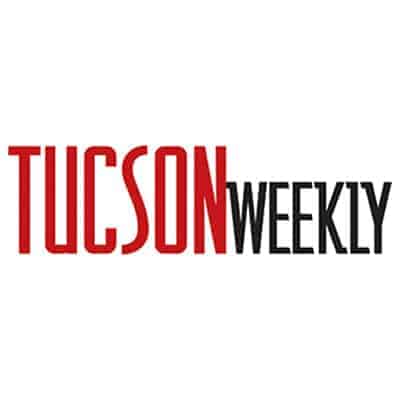
“Tucson Rounds Out Forbes Top 10 US Capitals of Influence,”
Tucson Weekly, July 4, 2014
Notes this writer about Havas PR CEO Marian’s column in Forbes listing the top 10 cities in the Southwest attractive to millennials living in the region: “In an article published online earlier this week, Forbes cites Tucson’s Hispanic millennials, its strong college-based community, and affordability as key factors in making it one of the hottest cities for growth. Oh yeah, and its Ethiopian food.” He adds: “If you haven’t been paying attention to national trends, the City of Tucson has been, and finally realized that creating an attractive lifestyle for future workers and employers now tops tax incentives.”

“Havas Worldwide Launches Global Climate Change Communication Practice,”
The Drum, July 2, 2014
Havas PR has begun a global climate practice operating from three regional hubs (London, New York, Sydney) and satellites in more than a dozen countries. Pete Bowyer will head the practice and report to Marian, Havas PR North America CEO. “Over the past five years, our people have been doing incredible, thoughtful and award-winning work on climate change,” says Marian. “Looking ahead, the issue of climate will surely trend in 2015, and no other global communications network can claim our degree of firsthand experience or is better equipped to advise clients in this critically important area.” Among that experience, notes this article, is launching Earth Hour with WWF in 2007 and Ban Ki-moon’s Big Data Climate Challenge in 2014.

“Power List 2014: Power Principals,”
PRWeek, July 1, 2014
“In an evolving comms landscape,” says PRWeek, “these 50 power players have the blueprint for effective global strategies as companies expand into new markets to increase growth and agencies promote their integrated business models. Havas PR North America CEO Marian rings in at No. 45 on this year’s list. Among the reasons, according to this article: “Since taking the helm at Havas in 2009, she has led the firm through a number of significant changes, including rebranding from Euro RSCG Worldwide PR in 2012. She also played an integral part in creating a Havas PR operation across several continents, called the Global Collective.… All of Salzman’s efforts were recognized in May at the inaugural PRWeek Global Awards in Barcelona, where she was honored with the Global Agency Professional of the Year award.”
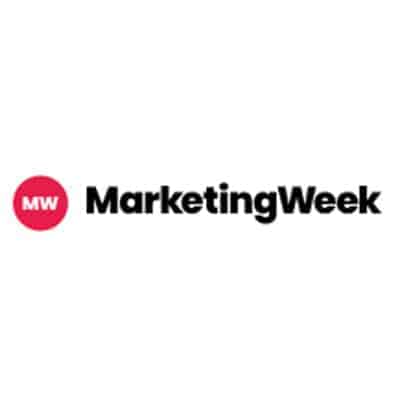
“Wise Up to the Millennial Way for a Next-Gen Business,”
Marketing Week, June 25, 2014
Millennials don’t want to work like employees now do—that is, always on—and organizations, media and marketing channels need to change, says the writer of this piece, using Marian’s words from a Hearst Magazines panel at the Cannes Lions Festival of Creativity. “We are still working long hours, but we are not farmers,” said Marian at the event. “It’s a generational problem—it’s not the millennials’ clock. We have a lot to learn from millennials, and we need to learn how to get their culture to evolve through the organization.” Click the link above to see the writer’s three tips for adapting to the new generation.

“Making Cannes My Own Festival of 4 B’s,”
PRWeek, June 18, 2014
Excerpted from Marian’s second dispatch from the Cannes Lions International Festival of Creativity: “I gave up on Cannes for ideas and formal inspiration and decided to make it about bonding, bingeing, bragging, and being of the moment. I began reading menus and street signs for inspiration. I started talking to the people next to me in any café or bar (remember bingeing), telling them about the Havas approach and some storytelling tools we have in the works. I did learn one new thing: My Havas colleagues convinced me to change my language, so consumers are now ‘people.’”

“What Clinton Says, Clinton Memes,”
CNN.com, June 17, 2014
Everyone has been talking about Hillary Clinton since she embarked on her recent book tour—especially the virtual community, and especially through memes. “How did Hillary Clinton suddenly go viral?” asks the author of this piece. It all started with the photo of the possible presidential candidate on her Blackberry that was turned into a fictional Texts from Hillary blog. And now Clinton herself is taking to the Twittersphere, “undergoing a swift digital makeover,” says Marian in the article, who adds that Clinton must be “of the people” and authentic when online. “The sudden burst of intellectual energy, even in 140 characters, reinforces she is of these times and living the now.”

“Too Much of a Once Good Thing,”
PRWeek, June 17, 2014
Excerpted from Marian’s first dispatch from the Cannes Lions International Festival of Creativity: “Cannes Lions is like the new social: too much data input and not enough intimacy. We already live in a world of global connections, real-time interactions, likes and follows, but few deep conversations; surely there are better ways to network, nurture creativity and get inspiration. Time to go elsewhere for brainfood.… I am so overloaded by branding and more branding that there’s no time (mindspace) for inspiration because of the extremeness of it all.”

“Eyes Wide Open on the Next America,”
PRWeek, June 16, 2014
To understand the future of the U.S., forget New York City, D.C., Detroit and all the up-and-coming cities like Omaha, Portland (Ore.) and Richmond. “[I]f you want to see the real Next America action unfold, look to the four border states: Arizona, California, New Mexico and Texas,” says Marian in this bylined article. Her agency surveyed millennials in those states and, she says, “uncovered a lot of interesting things about this microcosm of the U.S. Hispanic community versus how their non-Hispanic peers feel.… [M]ore Hispanics than non-Hispanics are optimistic about the future, dream of owning their own business, say it’s essential to stay close to family, rate holidays more important, and are more interested in fashion and local fashion stores, among many other results.”

“Step Aside, Metrosexuals, and Make Way for … the Spornosexual Man?“
The Washington Post, June 10, 2014
Say goodbye to the metrosexual male, says the man who coined the term, Mark Simpson, and hello to the spornosexual. He’s a cross between a porn star and sports star, says this article; Simpson first used the term in Out after he spotted sex symbols becoming sports stars and vice versa. The writer adds that Marian, CEO of Havas PR North America and the trendspotter who brought Simpson’s “metrosexual” to the pop culture, recently “suggested that metrosexuality had evolved, but probably not in the way Simpson hopes.” Marian wrote: “The word metrosexual has outgrown Simpson’s narcissistic depiction and now transcends narrow stereotypes to describe a whole range of traits.”

“Brand Mary Barra: ‘Tough Guy,’“
USA Today, June 5, 2014
The brand of GM CEO Mary Barra has changed ever since a report linked the automaker’s faulty ignition switches to more than a dozen deaths and Barra fired 15 employees, among other actions. “She’s been switched to the role of tough guy,” says Marian in this piece. “This is a much tougher role than what society might expect from a female CEO.” Among other comments, Marian adds this: “She’s proving her CEO-ness by implementing hard decisions. She comes off as someone you could be a little bit afraid of even as you respect them—and that’s what we need in our leaders.”

“Made Marian“
Quirk’s Marketing Research, June 2014
“In 1992, Marian Salzman found herself blazing a path through cyberspace that became the genesis of online marketing research,” says this profile. “As she tells it, though, it was just one page in the diary of a year when ‘everything was going completely haywire.’” By the next year, the story continues, American Dialogue, the online focus group company that Marian (now CEO of Havas PR North America) had launched, was running up to 20 focus groups a week. Through the next intense half-decade, she conducted the first benchmark study of Internet users, found herself on the forefront of social media, pioneered Internet use in The Netherlands and much more.

“Out of Black Market into Sunlight, Marijuana Lights up Minds of Marketing Mavens,”
AllGov, May 16, 2014
As marijuana is increasingly legalized for both recreational and medical reasons, marketers and entrepreneurs are looking for ways to profit from the crush of those clamoring for a toke. Marian predicts that fast-food companies might have the most to gain from this political and social sea change. She pinpoints NYC’s Nugget Spot chef-owner Jason Hairston, saying, “Hairston has a lot of company in making high-end stoner food. The list includes single-focus restaurants specializing in biscuits, pudding, bacon, cheese fries and burgers with doughnuts for buns. While many of them are in bar-heavy neighborhoods, their target demographic might very well have a different drug of choice.”

“Brands Must Rethink Media as Consumers Value Scale Over Consumption,”
MediaDailyNews, May 14, 2014
More and more consumers value substance over scale, asserts this MediaDailyNews piece, which looks to Havas’s “New Consumer and the Sharing Economy” study for insight. In the study, which analyzed responses from more than 10,000 people, 52 percent of respondents said they agree that decreased consumption will lead to fewer jobs, and 58 percent agree that buying products is a “patriotic act.” Marian is quoted here, saying that brands should concentrate on selling consumers an experience, as Americans aren’t going to buy as much “unnecessary stuff.”

“Havas: Consumers Coming Around to the Sharing Economy,”
PRWeek, May 13, 2014
“Most consumers are beginning to make more collaborative and sustainable purchases in order to waste less and improve society,” says the opening of this article about Havas Worldwide’s global study on the new consumer. It cites one of the most profound statistics from the study, which found that 69 percent of mainstream consumers and 77 percent of Prosumers believe that “overconsumption is putting our society and planet at risk.” Adds Marian Salzman, CEO of Havas PR North America: “Small is the new big, and we are also completely happy to recognize that if we don’t need to own something, it’s really okay to share it.”

“As Target Chief Steps Down, Golden Rules for a Smooth CEO Transition,”
PRWeek, May 9, 2014
After Target CEO Greg Steinhafel was replaced, PRWeek looked to a variety of experts in order to gather a list of “‘golden rules’ to follow when announcing succession plans”: the outgoing chief executive should serve as a bridge; convey character as well as credentials; and plan, plan, plan. Of the first rule, Marian says this: “Even in a great situation … [t]he announcement really needs to be about conveying the vision of what is next.” And of the final rule, she says, “Stakeholders feel like they’re in good hands when a company demonstrates it has planned for succession even when it is not expected.”

“Havas PR: Agency Business Report 2014,”
PRWeek, May 1, 2014
Havas PR won some and lost some business in 2013, meaning the agency experienced some very meaningful highs and lows last year, according to Marian, who returned to the office after a 10-week health recovery with a renewed focus on new business. Among the wins, the agency earned JCPenney’s Hispanic account, as well as business from Colliers International, Green Mountain Coffee Roasters and Au Bon Pain. The hiring of Ravi Sunnak as EVP of corporate and cause in 2013 has been instrumental in growing the firm’s corporate and executive branding offerings.

“Can Capitalism Afford a Conscience?“
PRWeek, April 14, 2014
Has corporate social responsibility (CSR) become nothing more than a “contrived marketing gimmick” that’s “superficial and soulless”? That’s what Marian writes in this PRWeek article, in which she suggests that CSR is being replaced by conscientious capitalism. What’s the difference? “[Conscientious capitalism is] about doing what is right, simply because it is the right thing to do—setting up a community kitchen not just for the photo op, press release and branding opportunity, but to actually give people food and care.”

“PRWeek Global Awards 2014 Shortlist Revealed,”
PRWeek, April 9, 2014
The shortlist for the inaugural PRWeek Global Awards has been released, and Havas PR North America is on it, as a finalist for Non-Profit Campaign of the Year, for its work on #GivingTuesday (client: United Nations Foundation). In addition, Havas PR was shortlisted for Issues and Crisis Campaign of the Year for its work with the United Nations Foundation’s climate change project. Plus, Marian was named finalist for Global Agency Professional of the Year. The Havas PR Global Collective, Havas PR UK and Llorente & Cuenca (both part of the Collective) also made the shortlist. The award presentation will be held in Barcelona on May 15.

“Salzman: How Metrosexuality Has Made Over the Men of Connecticut,”
Stamford Advocate, March 13, 2014
The metrosexual has evolved in the 11 years since trendspotter Marian introduced the word to the pop culture vernacular. In this bylined piece for Stamford’s Advocate, Marian, a Connecticut resident, writes that the men of her state are a different breed than they were a decade ago—no longer so worried about being perceived as gay, even in the political realm. A current flip side in the state, however, is that the confidence of Connecticut men is down, as evidenced by unemployment rates and an uptick in prescriptions for antidepressants and erectile dysfunction drugs.

“A (Mostly) Optimistic Outlook for PR,”
O’Dwyer’s, Feb. 24, 2014
Marian, a leading trendspotter and the CEO of Havas PR North America, writes this editorial forecasting what 2014 holds for the industry. She calls her outlook “both bleak and upbeat,” explaining that “public relations is in the midst of massive disruptions, upheavals, transitions and identity crises.” According to Marian, PR can survive the changes if it tries some of advertising’s swagger on for size. She goes on to highlight three positive trends in PR that prove that straight talk is what works with today’s consumer.

“Havas Fetes Guru to Entrepreneurs,”
O’Dwyer’s, Feb. 11, 2014
Havas PR North America (where Marian is CEO) hosted Venture for America (VFA) founder and CEO Andrew Yang, who has just published a new book, Smart People Should Build Things, at its New York headquarters. The agency’s connections to Yang’s organization run deep. Not only does Marian sit on its advisory board, but also Havas PR recently launched a social media consultancy, SocialProvidence, that is run by two VFA fellows. Marian says in the article that her goal is to provide “talented young entrepreneurs a field where they can run faster and freer.”

“2014 Women’s Hall of Fame Inductees Announced,”
Hartford Courant, Feb. 10, 2014
In October, three women will be inducted into the Connecticut Women’s Hall of Fame, and one is Marian. “This year, we honor and share the stories of three women whose contributions have revolutionized the ways we think about, relate to and communicate with the world around us,” says Katherine Wiltshire, executive director of the Hall of Fame. “Their work crosses spatial, technological and social boundaries, inspiring us to work harder, think bigger and imagine a more connected future.”

“Grooms Men,”
The London Magazine, February 2014
In London today, “[e]ven unreconstructed blokes look after their skin,” says writer Tabitha Lasley. From skin treatments to waxing, manicures to facials, the men’s grooming industry is big business. The next logical step: men’s makeup? Tom Ford and Marc Jacobs produce it. Harry Styles, Russell Brand and Johnny Depp wear it. But how about regular guys? Says Marian, the trendspotter who popularized “metrosexual” a decade ago: “I don’t see makeup for men taking off now or in the near future. Grooming products and light cover-ups, yes. But not color products. Male mascara and lipstick aren’t easy translations.”

“Whatever Happened to the Term New Man?“
BBC.com, Jan. 30, 2014
“The New Man was once a radical way to describe a male who wholeheartedly accepted equality in domestic life,” says the author of this piece. “But 30 years on, what has happened to the term?” Many people say it’s redundant, as defined roles for men and women no longer apply. Other monikers have come and gone in that time, too, including alpha male, metrosexual and übersexual, the latter of which was introduced by Marian and her co-authors in The Future of Men in 2005: “Übersexuals are confident, masculine and stylish, and committed to uncompromising quality in all areas of life.”
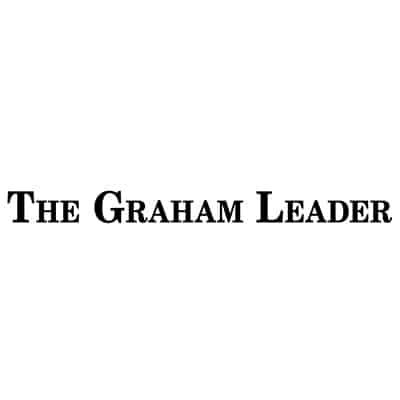
“More Women Are Watching the Super Bowl, but Do Advertisers Care?“
Digital First Media, Jan. 29, 2014
Fifty million women now watch the Super Bowl, but ads are still predominantly aimed at men. Why? “[M]any more men … are shopping, whether it’s food or household car products or childcare products,” surmises Hamline University professor Kim McKeage. But Marian once told Ad Age that maybe marketers simply don’t understand men: “We don’t know their body-mind conflicts, so we just assume they’re sexual. We don’t know their passions and interests, so we assume they’re beer and babes. Everybody says, ‘Poker is changing the landscape’—but what does that really mean?”

“In2Summit: Do Workplace Conventions Hinder Innovation?“
The Holmes Report, Jan. 23, 2014
A panel of marketing innovators at The Holmes Report’s inaugural In2Summit discussed a variety of work traditions—such as 9-to-5 hours, company size and geographic location—and how they affect innovation. Are New York City and Silicon Valley passé as idea hubs or still key breeding grounds? Who’s better able to disrupt: small, agile companies or bigger brands? One theme throughout the conversation, which was moderated by Marian, was that no matter the opinion on the subject, technology helps make innovation possible.
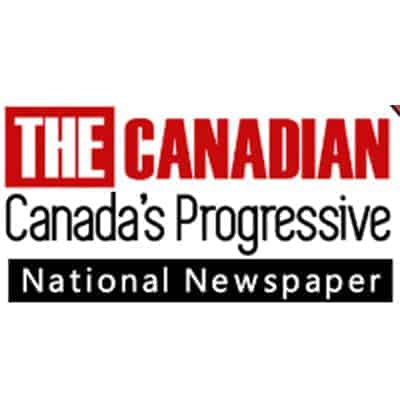
“Gut Research Reveals Benefits for Heart Health,”
The Canadian, Jan. 7, 2014
“In recent years, scientific and public health leaders around the world have been investing a lot of time and money to probe the mysteries of the human microbiome, otherwise known as the gut,” says this article, which points out that Marian has noted the phenomenon, too. It takes a quote from her annual trends report through Havas PR: “One of the most promising new pathways to all-around health is found in our gut. From prebiotics to probiotics, the field of microbiome research is shaping up as a solid approach to tackling a whole range of health problems.”

“Trends to Expect in 2014 … and Beyond,”
Stamford Advocate, Jan. 6, 2014
“From retirement age now being midcareer to our workplaces looking more and more like millennials, Americans are challenging and redefining age markers,” says Connecticuter Marian about trends for 2014 and how they’ll affect her state. Young people, for example, are turning off to Connecticut’s suburbs and on to urban life, meaning local areas will need to work harder to attract them. And on the other end of the spectrum, the state has a higher, and rising, proportion of over-65s than the nation as a whole (14.2 percent vs. 13.0 percent); Connecticut will need to think more about home-care services and senior centers, among other things.

“Mobile Media in 2014: New Behaviour Trends to Emerge,”
The Economic Times, Jan. 1, 2014
“Everybody from die-hard news addicts to casual gawkers gets at least some breaking news from social media now,” says Marian. “With headlines and essential points instantly available all the time, established news channels are moving away from old-style newscast formats toward longer shows that offer a deep-dive take on nonfiction stories.… [T]he traditional news business needs to create value in the gaps that are opened up by social media.”

“What’s Hot in 2014: ‘Radiant Orchid,’ 24-Hour Workdays and ‘Ugly’ Produce,”
Star-Ledger, Jan. 1, 2014
Marian, a world-renowned trendspotter, gives some of her forecasts for the new year, including “artisanal overload,” as a response to all the “mass-produced blandness” of recent times. She also says we’ll all start working a schedule that’s more reflective of the millennials in the workplace, meaning 9-to-5 is out and people will log hours “when it’s good for them and the business.”